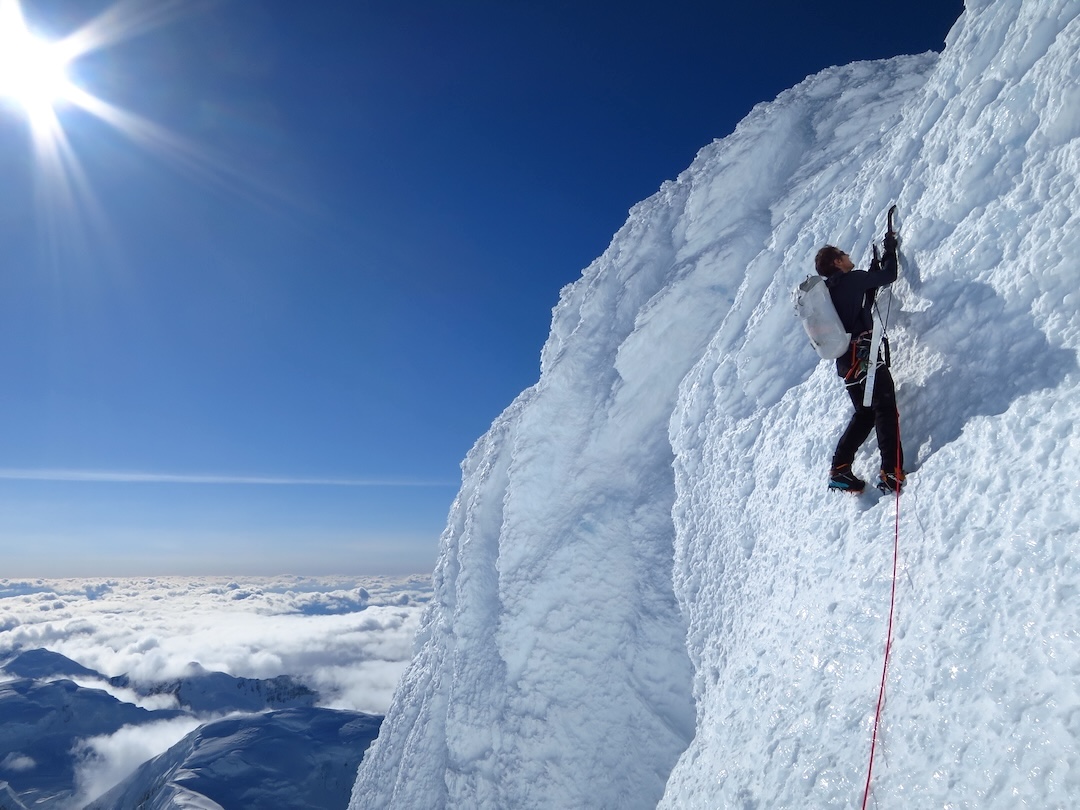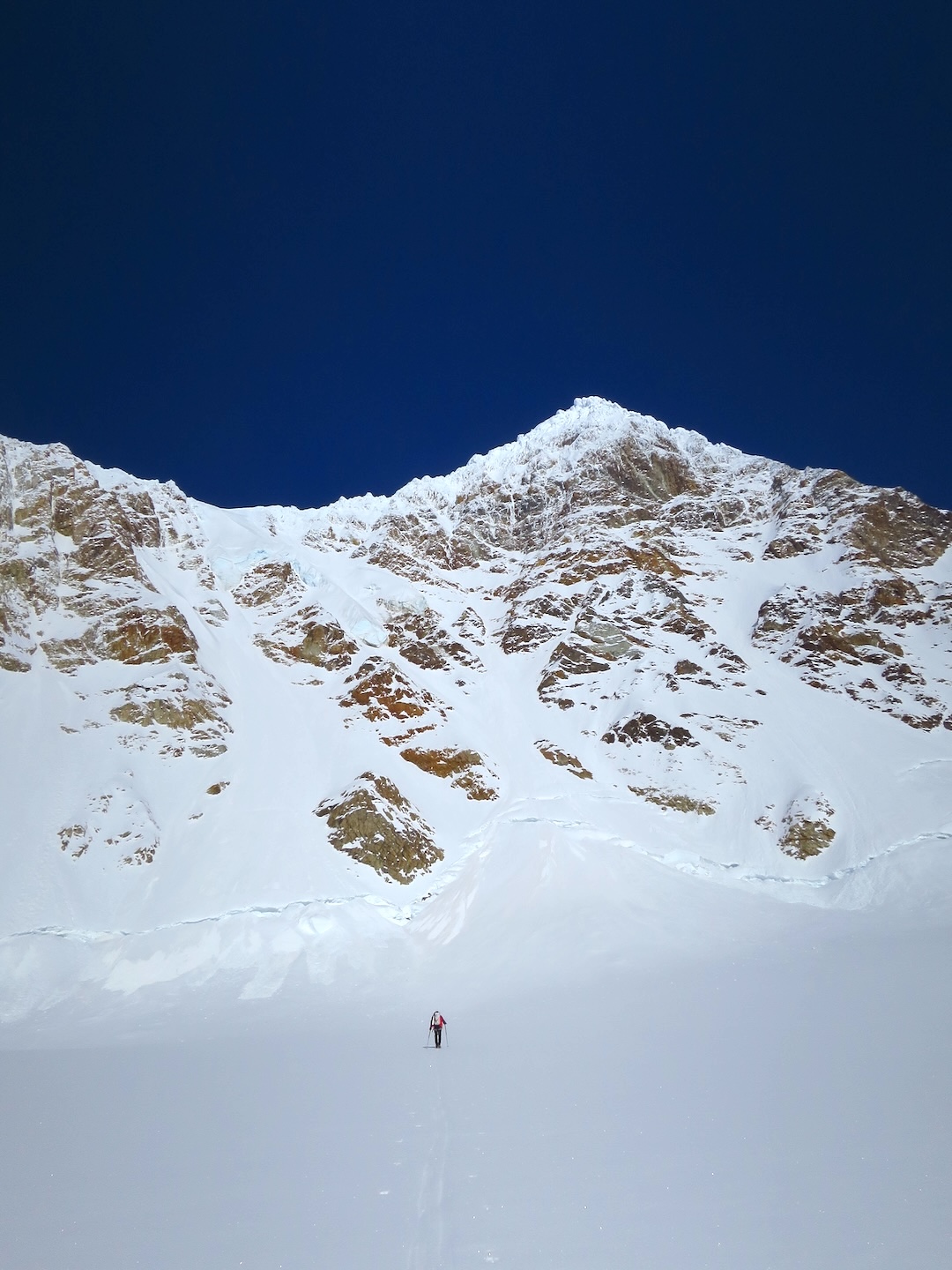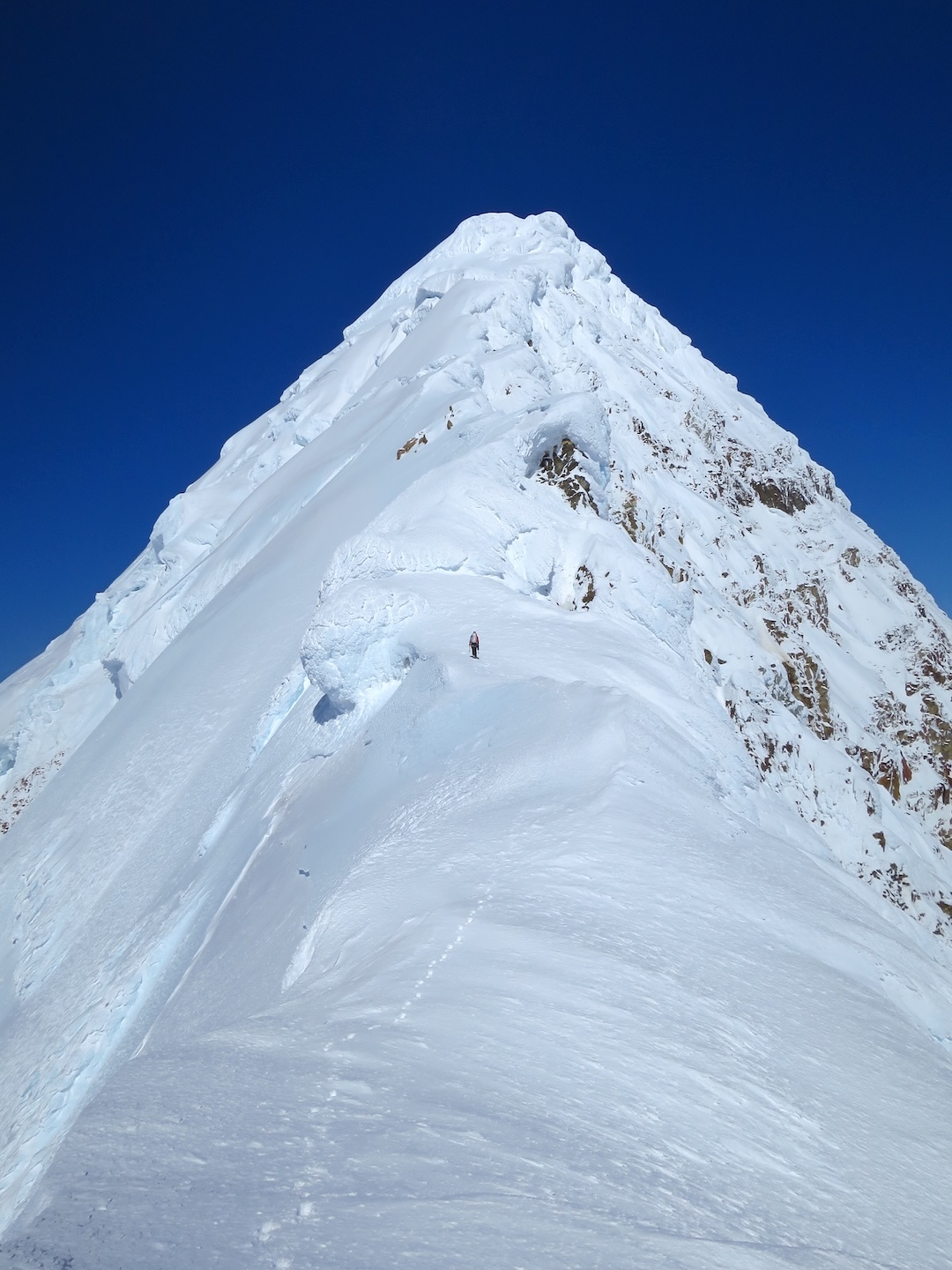Mt. Russell, East Face and South Ridge
Alaska, Alaska Range, Dall Glacier Area
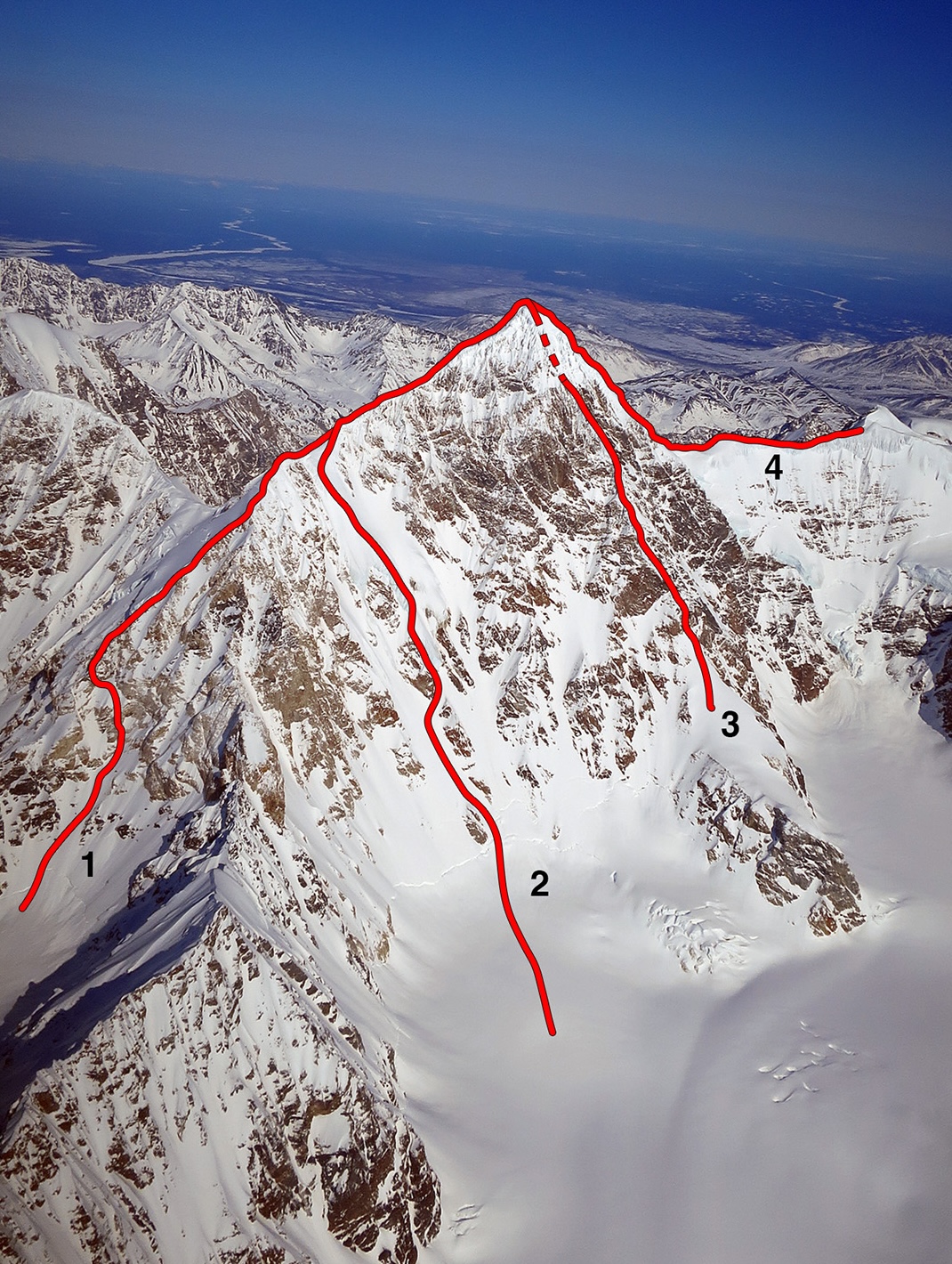
At 9:45 a.m. on April 27, Paul Roderick dropped Sam Hennessey and me on the upper Dall Glacier, directly beneath the nearly 6,000’-tall east face of Mt. Russell (11,670’)—our objective.
We had in mind a rapid round trip. After quickly setting up a tent to stash food and bivouac gear, we departed half an hour after landing, carrying light packs. We started up the left side of the east face, following the same line that Sam had climbed the previous spring with Courtney Kitchen and Lisa Van Sciver. On that attempt, they carried skis with the hope of descending off the summit. After 3,600’ of snow and ice slopes, they reached the south ridge, which they found scoured down to unskiable hard ice. They retreated and skied back down to the Dall Glacier.
The route Sam and I followed on the east face used several rock buttresses as natural protection against hazard from some seracs (that appeared quite benign and inactive). About mid-height on the face, the terrain steepened to 50° and the snow we had been booting up gave way to sustained hard névé and occasional ice—much icier conditions than what Sam and his partners had found. We continued to a flat area at 9,600’, near the base of the upper south ridge of the mountain. Until this point, we had climbed unroped for most of the way.
The upper south ridge was the route followed by Mt. Russell’s first ascent team in 1962 (see AAJ 1963). They accessed it from the west side via an airplane landing on the Chedotlothna Glacier (which is no longer feasible because of glacial recession). This section of ridge was repeated by Freddie Wilkinson and Dana Drummond in 2017 after they climbed a new route up the direct south face and ridge of Russell (5,000’, Alaska Grade 4; see AAJ 2018).
From where we intersected the ridge, there were several tricky sections of traversing across 50° ice and tightrope walking on knife-edge ridges. We used the rope for these parts, then continued unroped for several hundred feet up the moderate final ridge, easily avoiding numerous crevasses. Just beneath the summit, we reached a near-vertical wall of rime ice, surrounded by fantastically rimed gargoyle formations that spoke to the ferocious winds that buffet this mountain. We belayed the short bulge of rime and minutes later became only the ninth team to reach the summit, just seven hours after leaving our landing site. There wasn’t a breath of wind. I had made storm-plagued attempts on Russell in 1997 and 2019, and there were many other seasons where I had partners and dates lined up but never left Talkeetna due to poor weather. It was truly gratifying to reach the top of this elusive mountain.
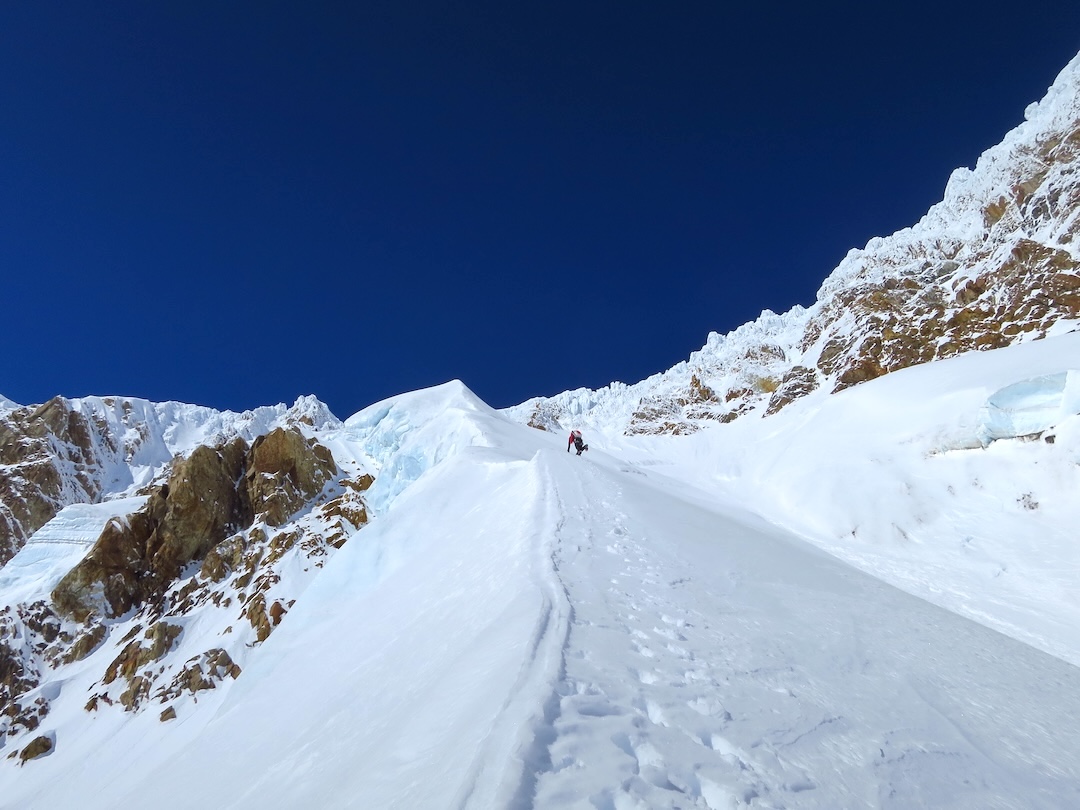
Sam and I descended to the landing site in just four hours, making for an 11-hour round trip and the mountain’s first one-day ascent. Paul picked us up the following morning.
While all of the terrain we followed had been climbed previously, the east face and south ridge had not been linked as a singular summit route. (The east face was climbed directly to the summit by Dave Auble and Charles Townsend in 1989, following a line farther right on the face, and remains the mountain’s most technically challenging route; see AAJ 1990.) Having attempted the now very broken northeast ridge in 1997, and having climbed most of the Wilkinson-Drummond route in 2019, I feel confident the Hennessey-Westman (5,700’, UIAA Grade V, 50° ice, 80°+ rime ice) is the fastest and most straightforward way to the summit of Mt. Russell. While the technical difficulties are modest, the route is sustained, serious, and committing. Future parties not wishing to single-push the route will find a perfectly flat bivouac site on the south ridge at approximately 9,600’, albeit very exposed to the wind.
—Mark Westman


